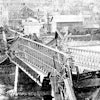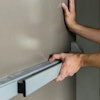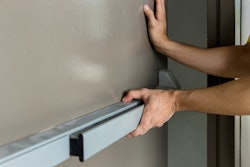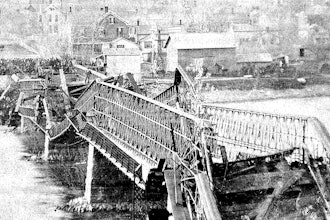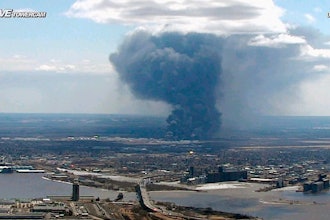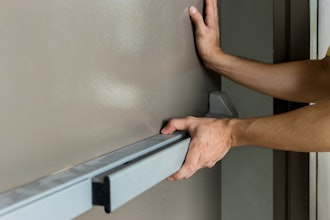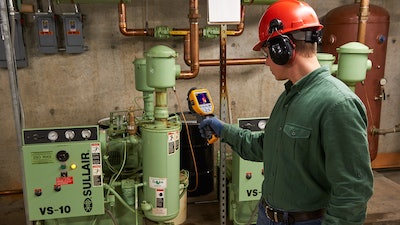
The more time workers spend within the arc boundary the higher their risk of exposure to electrical hazards like arc flash or electrocution. A great first step to take when starting a safety program is limiting that time by gearing technicians up with the right non-contact tools.
1. Remote display tools
Remote display tools are products that have detachable displays. These meters can be used like a conventional meter, but they also have the option to take the display off so you can stand a distance from the rest of the meter. Using a remote display tool like this, you set it up to take a measurement with the power off, then pull the display off and read it from outside the arc flash boundary after power has been restored. This makes it easier for a technician to take notes and record measurements as they may not need to be in full PPE.
2. Wireless tools
Wireless tools work similarly to remote tools, but instead of removing the display to see measurements from a distance, the tool wirelessly connects to an app and transmits the data to your smartphone and the cloud. You can use your wireless tool by having one person in the necessary PPE setting up the measurements while another remains outside of the arc flash zone, often up to 20 m from the wireless tool. The measurements being taken by the team member at the tool can be read directly from the connected app. That adds an extra layer of safety as team members outside the boundary can be keeping an eye out for the technician who is making the measurements. If working on a solo job, you can also use a wireless tool by turning off the power, setting the tool up for measurement, then walking outside of the arc flash boundary to reinstate the power and read the measurements.
Both workflows help limit the number of employees and amount of time a technician needs to spend in harm’s way. A wireless app can also help with preventive maintenance. The measurements taken can often be logged and saved into the app so trend data can be pulled up and monitored over time.
3. Thermal camera
Get temperature readings without needing to get too close to the motor or drive. A thermal camera lets you point it at an asset and shoot to get a temperature measurement. Being able to take these measurements from a distance means you can remain outside of the arc flash boundary and may not need to wear full PPE to check the status of an asset.
Using a thermal camera offers a quick and easy first-round check. If the camera detects additional heat, there may be a problem and the next steps can involve grabbing additional tool and running tests to diagnose the issue. That can mean opening up panels or equipment that can potentially cause an arc flash. If the technician doesn’t notice a heat increase, they can be saved the time needed to dress out in full PPE and run those tests.
Thermal cameras are a great tool to add to a preventive maintenance plan. As you take scans of the same assets with each scheduled pass, you can build a trend of the assets temperature and often begin to notice and repair problems early on. A thermal camera with a wireless connection makes it even easier to compare one scan to the next. This, in turn, helps to reduce the cost of preventive maintenance.
Additional temperature measurement tools like IR thermometers are also great to keep on hand. While they do not offer a thermal image or overlay of an asset, they can help you grab a quick temperature reading on an asset. Non-contact IR thermometers can even add an additional layer of safety. You can use them to measure from a distance and avoid climbing ladders or getting too close to check for hot spots on equipment.
4. IR window
IR windows pair with IR and thermal cameras. The window is installed directly into a panel door and has a clear, see-through space where you can line up a thermal camera and scan the inside of a panel or cabinet. This not only limits the need for full PPE in some cases, but also speeds up the process, ensuring workers are able to move out of an arc flash boundary quickly.
Including IR windows in your assets offers quicker access to scan inside and conduct preventive maintenance sweeps. As the same thermal scans are done, they can show a trend making it easier to catch problems before they get too large.
5. Electrical Measurement Window
Electrical measurement windows are permanently installed into a cabinet door, similar to an IR window, but instead of being clear, this window has connection points. Voltage and current connections are made inside the panel giving workers access to energy and power quality data without needing to open the panel door. Power quality tools can be plugged directly into the electrical measurement window and collect the data need.
Using a system like this adds to your company’s safety by helping to reduce the risk of arc flash and electrocution and limiting the need to open panel doors. It also helps decrease maintenance costs, reduce downtime, and increase measurement efficiency.
For more information, visit Fluke online.

